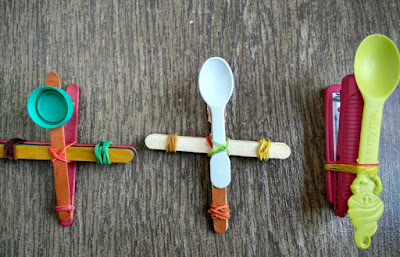Energy transfer

Today, P came back home and was very excited. When I enquired about her excitement , she said "Today, we played games at school and I feel very energetic. So, tell me what experiments are we doing for the science activities". Till then I was not sure of the topic and so was still wondering what kind of activities to do. But, the word "energetic" gave me the idea of doing some experiments related to energy transfer. That's how it all started. We have heard the word 'energy' quite a few times. But, let's see what it really means in physics. What is Energy? Energy is the measurement of the ability of something to do any work. It is not a material substance. Energy exists in many different forms such as light energy, mechanical energy, heat energy, sound energy, chemical energy, nuclear energy and so on. Though we hear so much about energy consumption, energy can never be created or destroyed. It can only be transferred from one form to...
